
Feeding roots to animals
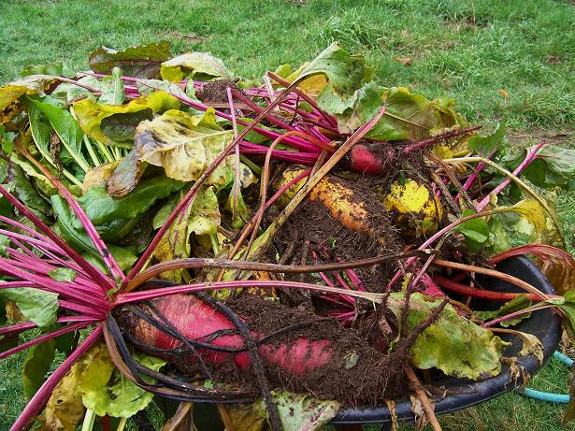

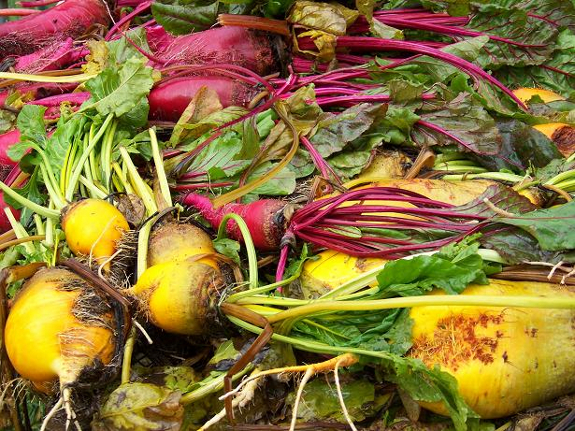
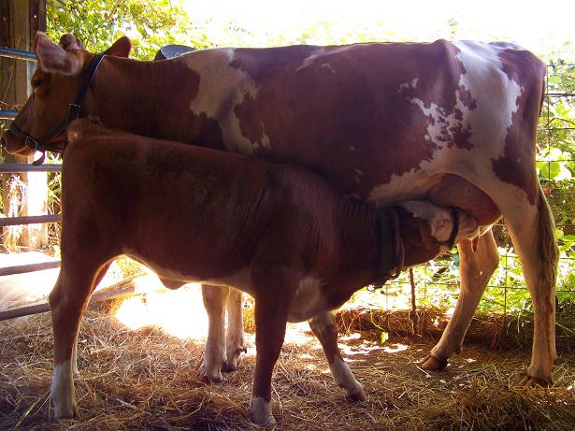
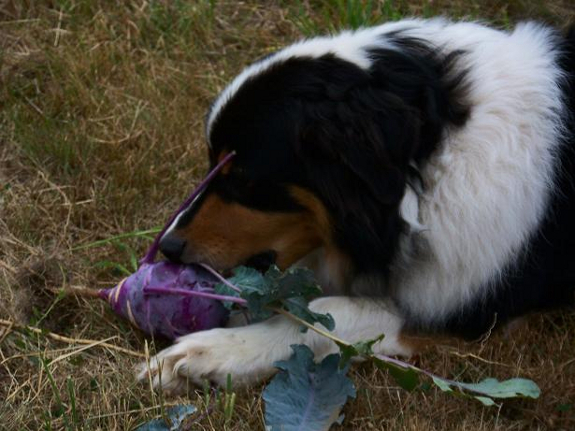
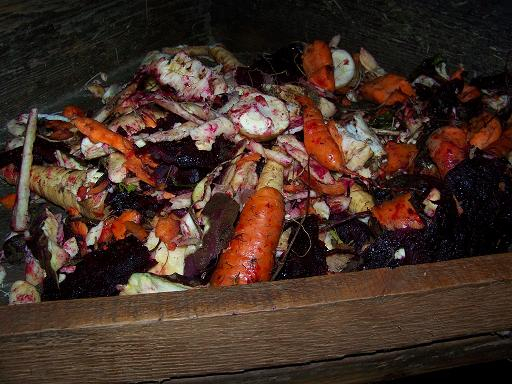
 Nita uses a
mechanical chopper to cut up the five pounds of mixed roots
she provides for her dairy cow each winter day. She
notes that the chopper processes the day's roots in one
minute, versus five minutes with a knife. Alternative
methods for processing roots for livestock include cooking
(essential when feeding potatoes to non-ruminants like pigs
and chickens), grating, or feeding whole and raw.
Nita uses a
mechanical chopper to cut up the five pounds of mixed roots
she provides for her dairy cow each winter day. She
notes that the chopper processes the day's roots in one
minute, versus five minutes with a knife. Alternative
methods for processing roots for livestock include cooking
(essential when feeding potatoes to non-ruminants like pigs
and chickens), grating, or feeding whole and raw."While the roots won't replace all the grain for your stock, they can play a bigger part of their winter diet, giving variety and giving you more control in what you are feeding your animals," Nita concluded. "Growing and harvesting roots has made us feel closer to our goal of self-reliance. And we find as we eat more of these types of in-season vegetables ourselves, we rely less on labor- and energy-intensive food-preservation methods. While I'm not giving up my canning and freezing, I find that I'm storing less food that way, and actually providing more variety in our meals."
$10 Root Cellar is free today on Amazon, so download your copy now! If you can't figure out the apps allowing you to read kindle ebooks on your computer or other device, you can also email me today for a free pdf copy. Thanks for reading!
| This
post is part of our $10
Root Cellar lunchtime series.
Read all of the entries: |
Want more in-depth information? Browse through our books.
Or explore more posts by date or by subject.
About us: Anna Hess and Mark Hamilton spent over a decade living self-sufficiently in the mountains of Virginia before moving north to start over from scratch in the foothills of Ohio. They've experimented with permaculture, no-till gardening, trailersteading, home-based microbusinesses and much more, writing about their adventures in both blogs and books.
Want to be notified when new comments are posted on this page? Click on the RSS button after you add a comment to subscribe to the comment feed, or simply check the box beside "email replies to me" while writing your comment.

Very interesting bit of history about turnips & livestock. Thanks for the info.
Shredded beet pulp costs about $15 for a 50 lb bag at the feed store. A dairy cow can be given up to 10lb/d. Gotta wonder if all the work & expense involved in growing and processing your own is worth it vs buying it?
Great post Anna! Thanks for the link!
Doc, the only reason to stay away from the convenience of shredded beet pulp for feed is that the product is from GMO beets. If you don't care about the GMO issue in feed, or the heavy pesticide use in conventional crops and strictly look at this as a labor equation, then yes for sure the bagged beet pulp by-product is much easier, only requiring cash and some forethought to soak before feeding.
We grow our own food so we can control some of these issues in our personal food supply. From a labor standpoint with the milk cow, it's much, much easier to pickup a gallon of milk at the store or a pound of butter too, but this all works with our landscape and suits our situation, but it definitely is not for every homesteader or farmer. http://non-gmoreport.com/articles/jun08/sugar_beet_industry_converts_to_gmo.php
Nita: I completely understand and sympathize with your POV (We won't get into the GMO/chemical thing. I never like to argue religion
Let's face it: any city dwelling welfare recipient has a higher standard of living than any homesteader when evaluated strictly on the time/money/labor scale. It's the intangibles associated with growing your own & living liberated that are priceless.
And when the SHTF, as the preppers say, we'll still have our food security.
and I stumbled on your blog while researching feeding swede and carrot to cows. You say use have a mechanical chopper. I don't suppose they are still being made. On the hunt! Cheers, Dave
Craigslist score! Thompsons banner root chopper. Close to home, working condition, cheap.